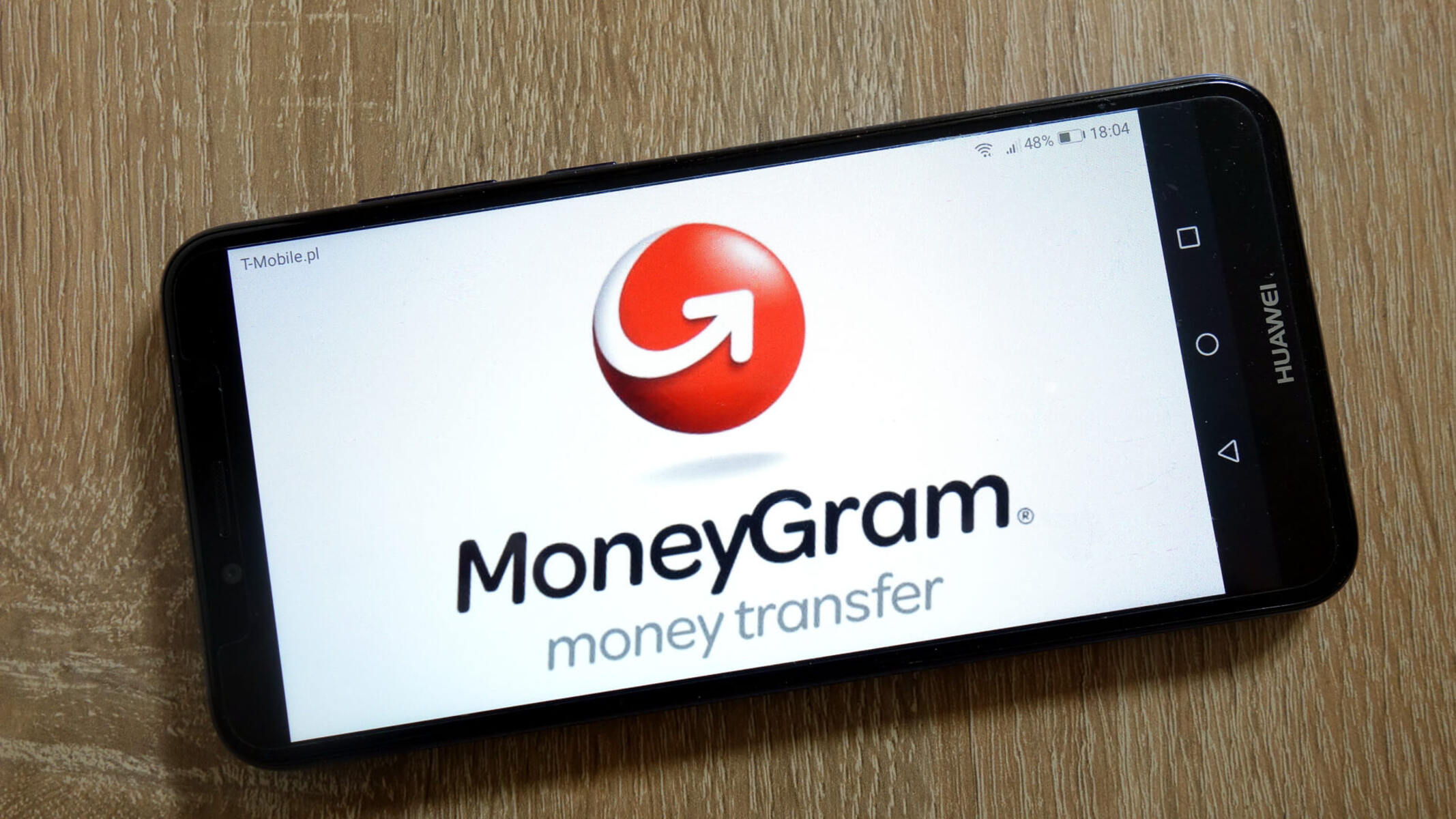Introduction
Money transfer is a fundamental aspect of our modern financial system, allowing individuals and businesses to send and receive funds quickly and securely across the globe. Whether you need to send money to a family member in another country, pay for goods or services internationally, or support a charitable cause overseas, money transfer services offer a convenient and efficient solution.
Over time, the process of money transfer has evolved and transformed to meet the changing needs of society. From ancient forms of bartering to the development of currency, and eventually, the advent of digital technology, money transfer methods have come a long way. Today, we have a range of options available to us, offering different features, costs, and levels of convenience.
Understanding how money transfer works and the various options available can help you make informed decisions when it comes to managing your finances. In this article, we will explore the history of money transfer, how it works, popular methods, the benefits, risks, and considerations to keep in mind, as well as tips for choosing the right money transfer service.
Whether you are an individual seeking to send money abroad or a business owner exploring payment options for international transactions, this guide will provide valuable insights to help you navigate the world of money transfer.
History of Money Transfer
The origins of money transfer can be traced back to ancient times when societies relied on bartering to exchange goods and services. Bartering involved the direct exchange of one item for another, which created various limitations and challenges. As societies grew more complex and trade expanded, the need for a standardized form of currency became evident.
The concept of currency emerged with the use of commodities such as shells, livestock, gems, and precious metals. These items held intrinsic value and were widely accepted as a means of exchange. However, carrying large quantities of these commodities for trade was impractical, leading to the development of coins. The use of coins as a medium of exchange simplified transactions and facilitated trade across regions.
With the advancements in communication and transportation, the need for long-distance money transfer arose. Early methods included the use of letters of credit and bills of exchange, which allowed individuals to transfer funds without physically transporting money. These instruments gave rise to international banking systems and laid the foundation for modern-day money transfer services.
In the 19th and 20th centuries, the invention of the telegraph revolutionized the speed and efficiency of money transfer. Telegraphic transfers allowed individuals to send money electronically over long distances, reducing the reliance on physical transportation methods such as mail or messengers. This marked a significant milestone in the history of money transfer, paving the way for the digital era.
With the advent of computers and the internet, the world witnessed a paradigm shift in money transfer. Online banking and electronic fund transfers became commonplace, enabling individuals to send and receive money with just a few clicks. Peer-to-peer payment platforms and mobile payment apps further enhanced the accessibility and convenience of money transfer, revolutionizing the financial industry.
Today, the rise of cryptocurrencies such as Bitcoin has added another dimension to the history of money transfer. These digital currencies utilize blockchain technology to facilitate secure and decentralized transactions, offering an alternative form of money transfer outside the traditional banking system.
The history of money transfer is a testament to human ingenuity and the drive to create efficient means of conducting transactions. From bartering to digital currencies, the evolution of money transfer methods has shaped the way we exchange value and paved the way for a globalized economy.
How Does Money Transfer Work?
Money transfer involves the movement of funds from one person or entity to another, typically across different geographic locations. The process may vary depending on the chosen method of transfer, but the underlying principles remain the same.
The first step in money transfer is initiating the transaction. This can be done through various channels, including banks, money transfer service providers, online platforms, or mobile apps. The sender provides the necessary details, such as the recipient’s name, contact information, and the amount to be transferred.
Once the transaction is initiated, the sender’s funds are debited either from their bank account, credit/debit card, or any other designated source. The funds are then securely transferred to a corresponding institution or service that acts as an intermediary in the process. This intermediary could be a bank, a money transfer service, or a digital payment platform.
The intermediary plays a crucial role in money transfer by ensuring the security, verification, and transmission of funds. They may employ various mechanisms, such as encryption, identity verification, and compliance with regulatory requirements, to ensure the integrity of the transaction.
After receiving the funds, the intermediary then facilitates the transfer to the recipient. The funds can be made available in various forms, including cash pick-up at a designated location, direct deposit into the recipient’s bank account, or through digital wallets or prepaid cards.
The recipient is notified about the transfer and provided with the necessary details to access the funds. Depending on the method of transfer, the funds may be available instantly or may take a few business days to process, especially for international transfers.
In cases where currency conversion is involved, the intermediary or the recipient’s financial institution may handle the conversion process. This ensures that the recipient receives the funds in their preferred currency, taking into account the prevailing exchange rates and any applicable fees or charges.
It is crucial to remember that each money transfer method comes with its own set of considerations, such as fees, exchange rates, speed of transfer, and the level of convenience. Understanding these factors and comparing different options can help you choose the most suitable method for your specific needs.
Overall, money transfer works by securely transmitting funds from the sender to the recipient through an intermediary using various channels and methods. The advancement of technology has revolutionized the efficiency and accessibility of money transfer, making it an essential tool in our interconnected global economy.
Popular Money Transfer Methods
With the ever-growing demand for convenient and efficient money transfer services, several methods have emerged that cater to different needs and preferences. Here are some of the most popular money transfer methods used today:
- Bank Transfers: Bank transfers, also known as wire transfers, are a common method for transferring funds domestically and internationally. This method involves transferring money directly from one bank account to another. While bank transfers are generally secure and reliable, they can be slower and may involve higher fees compared to other methods.
- Money Transfer Companies: Money transfer companies such as Western Union, MoneyGram, and TransferWise specialize in facilitating money transfers between individuals or businesses. These companies often have a wide network of agents or partner banks worldwide, making it convenient for recipients to collect cash or receive funds in their local currency. Money transfer companies offer competitive exchange rates and varying transfer speeds.
- Online Payment Platforms: Online payment platforms like PayPal, Venmo, and Skrill allow users to send money electronically to individuals or businesses. These platforms offer a convenient way to transfer funds and often provide additional features such as online shopping and peer-to-peer payments. However, it’s important to note that not all online payment platforms offer international money transfer services.
- Mobile Money Transfer Apps: With the widespread use of smartphones, mobile money transfer apps have gained popularity. Apps like Zelle, Cash App, and Paytm enable users to send money to friends, family, or businesses with just a few taps on their mobile devices. These apps often offer fast transfers and may have additional features like bill payments and mobile recharge services.
- Cryptocurrencies: The rise of cryptocurrencies, such as Bitcoin and Ethereum, has introduced a decentralized and digital form of money transfer. Cryptocurrencies use blockchain technology to facilitate secure peer-to-peer transactions without the need for intermediaries. While the concept of cryptocurrencies is still evolving and carries certain risks, they offer faster transfers and potential cost savings for international transactions.
Each money transfer method has its own advantages and considerations, including fees, exchange rates, transfer speed, and accessibility. It is essential to evaluate these factors based on your specific requirements and the location of the recipient. Additionally, consider factors such as reliability, customer support, and regulatory compliance when choosing a money transfer method.
Ultimately, the choice of method will depend on your individual preferences, the urgency of the transfer, and the specific countries or regions involved in the transaction. With a wide range of options available, you can find a money transfer method that suits your needs and ensures a seamless transfer of funds.
Benefits of Money Transfer
Money transfer services provide numerous advantages that make sending and receiving funds across borders or even domestically a convenient and efficient process. Here are some key benefits of using money transfer:
- Speed: Money transfer services allow for fast transactions, enabling funds to be sent and received within minutes or hours, depending on the chosen method. This is especially beneficial in urgent situations where immediate access to funds is necessary.
- Convenience: Money transfer services offer a high level of convenience, as transactions can be initiated online, through mobile apps, or even at physical agent locations. This eliminates the need for time-consuming paperwork or the hassle of visiting a bank branch.
- Global Reach: Money transfer services have extensive networks that span across multiple countries, making it possible to send funds to virtually any corner of the world. This helps individuals and businesses overcome geographical barriers and facilitates cross-border transactions.
- Security: Reputable money transfer services employ robust security measures, including encryption and identity verification, to ensure the safety of transactions. This gives users peace of mind knowing that their funds are protected throughout the transfer process.
- Accessibility: Money transfer services cater to a wide range of users, including those without bank accounts or formal financial institutions. This inclusivity allows individuals in underserved areas or regions with limited banking infrastructure to access and utilize financial services.
- Competitive Exchange Rates: Money transfer services often offer competitive exchange rates, which can result in cost savings for individuals and businesses involved in international transactions. Comparing rates between different providers can help maximize the value of the transferred funds.
- Trackability: Many money transfer services provide tracking capabilities, allowing both senders and recipients to monitor the status of their transactions. This transparency adds an extra layer of assurance and enables parties to stay informed throughout the process.
- Additional Features: Some money transfer services come bundled with additional features like bill payments, mobile top-ups, and even investment options. These added functionalities provide users with a more comprehensive financial platform.
Whether you are an individual supporting family members abroad, a business owner making international payments, or someone needing to send emergency funds, money transfer services offer a host of benefits that make managing your finances across borders easier and more efficient.
It is essential to research and compare different money transfer services to find the one that best aligns with your specific needs and priorities. Consider factors such as fees, transfer limits, customer support, and the availability of the service in the desired recipient location.
By leveraging the advantages of money transfer services, you can enjoy seamless and secure transactions, saving time, and enabling effective management of your financial affairs across the globe.
Risks and Considerations
While money transfer services offer convenience and efficiency, it is important to be aware of the potential risks and considerations associated with these services. By understanding these factors, you can make informed decisions and mitigate any potential challenges. Here are some key risks and considerations:
- Fees and Exchange Rates: Money transfer services may charge various fees, including transaction fees, currency conversion fees, and hidden charges. Additionally, exchange rates offered by these services may not always be the most favorable. It is important to compare fees and exchange rates among different providers to ensure that you are getting the best value for your money.
- Security: While reputable money transfer services implement robust security measures, there is always a small risk of fraud or cyberattacks. It is crucial to choose a trusted and well-established provider that prioritizes data protection and has a strong track record in safeguarding customer information.
- Delays and Technical Issues: Occasionally, money transfers may experience delays or technical glitches that can impact the speed and efficiency of the transaction. It is advisable to factor in possible unforeseen circumstances and choose a provider with reliable customer support to address any issues swiftly.
- Regulatory Compliance: Money transfer services are subject to various regulations and compliance requirements, both in the sender’s and recipient’s countries. It is important to ensure that the chosen provider adheres to these regulatory frameworks to avoid any legal complications or delays in processing the transfer.
- Country-Specific Restrictions: Some countries have specific regulations and restrictions on money transfers, including transfer limits or prohibitions on certain types of transactions. Make sure to familiarize yourself with the local regulations in both the sender’s and recipient’s countries to ensure compliance and a smooth transfer process.
- Recipient Accessibility: Before initiating a money transfer, consider the availability and accessibility of the chosen money transfer method in the recipient’s location. Not all services may be available in every country, or the recipient may face challenges in accessing the funds due to local restrictions or limited infrastructure.
- Identity Verification: Money transfer services often require individuals to provide identification documents to comply with anti-money laundering (AML) and know-your-customer (KYC) regulations. Ensure that you have the necessary documentation ready to facilitate the transfer process and prevent any delays.
By being aware of these risks and considerations, you can take the necessary precautions and make informed decisions when selecting a money transfer service. Research and compare different providers, read reviews, and consider the specific needs of your transfer to ensure a smooth and secure transaction.
It is also advisable to stay vigilant and regularly monitor your transactions for any suspicious activity. Report any concerns or discrepancies to the money transfer service provider and relevant authorities as appropriate.
While there are risks involved, using trusted money transfer services and following best practices can help mitigate these risks and ensure a positive money transfer experience.
Choosing the Right Money Transfer Service
Choosing the right money transfer service is crucial to ensure a seamless and secure transaction. With numerous options available, it’s essential to consider several factors before making a decision. Here are some key considerations to guide you:
- Transfer Fees: Compare the fees charged by different money transfer services. Look for services that offer competitive rates and transparent fee structures. Take into account any additional charges such as currency conversion fees or receiving fees.
- Exchange Rates: Consider the exchange rates offered by each service. Look for a provider that offers competitive rates to maximize the value of your transferred funds. Keep in mind that exchange rates can fluctuate, so it’s a good idea to monitor rates leading up to your transfer.
- Transfer Speed: Evaluate the speed of the transfer, especially if you require immediate access to the funds. Some services offer instant transfers, while others may take a few hours or even days. Choose a service that aligns with your urgency and needs.
- Security Measures: Prioritize security when choosing a money transfer service. Look for providers that utilize strong encryption and secure communication channels to protect your personal and financial information. Check if the provider is regulated and licensed in the relevant jurisdictions.
- Customer Support: Assess the quality of customer support provided by different services. Look for clear communication channels, responsive customer service, and readily available assistance in case of any issues or queries during the transfer process.
- Accessibility for Recipient: Consider the ease with which the recipient can access the transferred funds. Ensure that the chosen service has convenient payout options for the recipient, such as cash pickup locations, bank account transfers, or mobile wallet integration.
- Geographical Coverage: Verify if the money transfer service operates in the countries you intend to send money to or receive funds from. Some services have a wider network and reach, while others may have limited coverage or specific restrictions in certain regions.
- User Experience: Evaluate the user experience of the money transfer service. Look for intuitive and user-friendly interfaces, easy navigation, and clear instructions throughout the transfer process. Positive user reviews and ratings can also provide valuable insights into the overall experience.
To make an informed decision, it is recommended to research multiple providers, compare their features and offerings, and read reviews from other users. Pay attention to any red flags, such as negative customer experiences or unresolved complaints.
Keep in mind that the right money transfer service will depend on your specific requirements, including factors like transfer amounts, destination countries, and transfer frequency. By carefully considering these criteria, you can select a provider that aligns with your needs and ensures a smooth and secure money transfer experience.
Conclusion
Money transfer services play a vital role in our increasingly interconnected world, facilitating the seamless movement of funds across borders. From the historical development of currency to the advent of digital technology, money transfer methods have evolved significantly, offering convenience, speed, and accessibility to individuals and businesses worldwide.
In this article, we explored the history of money transfer, understanding how it works, popular methods, the benefits, risks, and considerations to keep in mind when choosing a money transfer service.
Money transfer services provide several advantages, including fast transactions, global reach, convenience, and competitive exchange rates. They allow individuals and businesses to securely send and receive funds, enabling cross-border transactions and financial support to loved ones or business partners in different countries.
However, it is important to consider the risks and factors associated with money transfer, such as fees, security, regulatory compliance, and recipient accessibility. By being aware of these considerations and choosing a trusted and reliable provider, you can mitigate risks and ensure a smooth transfer process.
When selecting a money transfer service, evaluate factors such as transfer fees, exchange rates, speed, security measures, customer support, and geographical coverage. By comparing different providers and considering your specific needs, you can make an informed decision that aligns with your requirements and ensures a positive money transfer experience.
As technology continues to advance, the landscape of money transfer services is likely to evolve further, offering increased convenience, accessibility, and efficiency. Stay informed about the latest developments in the field to make the most of the available options and make your money transfer experience even more streamlined and effective.
Whether you’re sending money to support family members, making international business payments, or simply managing your finances across borders, money transfer services provide a reliable and convenient solution. By making thoughtful decisions, you can leverage these services to make your financial transactions more accessible, secure, and efficient.

























